Several months ago, Nooshafarin, a 28- year-old resident of Isfahan, began wearing leggings under her manteau. She found the pairing of tight pants under a loose manteau the perfect fashion statement, a more pulled together look that also happened to be very comfortable. Across Iran, tens of thousands of women were coming to the same conclusion: leggings were the Iranian woman's best friend, an affordable garment that lent the required manteau covering a more chic appearance, and were easy to coordinate. “They make my figure look better, and they're affordable,” says Fatemeh, a young journalist in Tehran.
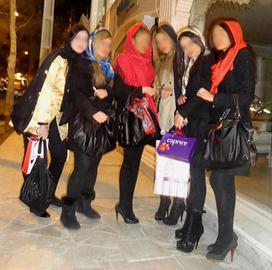
Once only worn for aerobics classes, leggings have become standard fashion in cities across Iran, showing up in clothing stores everywhere, sold in home legging shows, and spawning a domestic market in Iranian-made leggings and a glut of imports from both Turkey and China. As Iranian women continue to push the boundaries of what can be worn within the state's strict dress codes, looks that were risque even a decade ago are becoming, by sheer force of mass determination, ordinary today.
The nationwide popularity of leggings however, is provoking a backlash from hardline bloggers and religious websites, who fear the onslaught of tight pants is perilous for the country's morals. “This year women's fashion has changed yet again,” laments the conservative website Fater News. “They are now wearing leggings instead of pants altogether, not even tight jeans!” The website News Base of Supporters of Velayat blames the trend on “spy agencies of the enemy and anti-revolutionaries.”
The newest front in Iran's long-running fashion wars is also being waged on social media, where devotees and angry critics are battling it out on Facebook pages like Supporters of Leggings-Wearers and I Hate Leggings, which worries that “what we're seeing now with leggings is only the first phase of a horrifying project intended to denude Iranian women and normalize such an effort before officials.” The page also uses a play on words for the Persian term for leggings (“support”) to suggest that wearing them is equivalent to supporting free sex.
If you ask Iranian women themselves, their reasons for wearing leggings are myriad. Iranwire spoke to a dozen women from around the country, and found motivations ranging from the obvious (they're comfortable and look good) to the rebellious. Fatemeh, a young journalist in Tehran, says she wears leggings because “they make my figure look better, and they're affordable.” She favors both the imported Turkish and Chinese brands, and says prices range dramatically, from 7,000 to 60,000 toman.
The Iranian market is responding to high demand for leggings, and the go-to place is Norouzkhan Bridge in the Tehran bazaar, wear domestically-produced leggings sell for as little as 6,000 toman. Fatemeh says she has never been stopped by morality policy on the street, but that if she's wearing leggings she is often not admitted to press conferences, especially if they're colored.
Farzaneh, a young woman from Rasht, likes the message they send. “I wear leggings because I'm tired of wearing pants, and because it satisfies me when I can manage, to whatever extent, to flout the dress codes of the Islamic Republic.” She says she has managed to evade the morality police to date, and always keeps a chador in her bag for emergencies. She notes that previously only black and navy leggings were to be found in Tehran, and says she's thrilled that there's finally freedom of choice to be had in style and color.
Not all women have gone unscathed. Mahsa, a 29-year-old in Tehran who wears leggings religiously (she says their particularly comfortable for driving) has been detained by morality police once, while on a trip Isfahan. The authorities asked her friends to go home and get her looser pants to wear. She managed to extricate herself by faking a heart condition, but says the experience hasn't discouraged her from wearing leggings. She has been upset recently at the influx of Chinese imports, which she says are ruining the leggings market; she prefers Turkish brands, and often buys from women who hold sales in their homes.
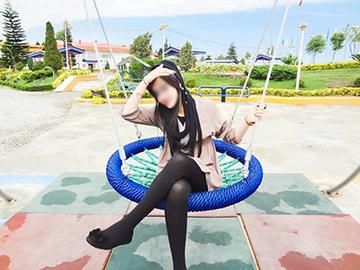
Some Iranian women are ambivalent towards leggings. Sommayeh, a young woman living in Shiraz, says she also likes how much easier they make coordinating top and bottom, but she complains that many women only wear leggings so they appear more sexy for men. She still wears them, and says tight pants are a under a tunic-like top are traditional dress in southern Iran. Sannaz, a 26-year-old Tehrani, says she only wears them to parties, and then usually under a skirt, to complete the look. “I don't wear them on the street, because they attract men's' attention,” she says.
Zahra, 31, a resident of the island of Kish, says that morality police there are now sensitive to leggings and scout for them, but that women don't pay them any mind. She doesn't wear them herself, because she says the hot island weather of Kish makes anything tight uncomfortable.
It's not only modern women who are into leggings. A survey of religious sites affiliated with the seminaries of Qom suggests that traditional women are also fans, and often wear leggings with their families' approval. One woman enquired on a religious site as to Islam's view on leggings: “I've been wearing leggings outside the house instead of pants for a couple of weeks now, and my husband doesn't mind. I wanted to ask, is it all right to wear leggings, and these new tight manteau that are figure hugging?”
The response of religious sites to such questions is usually pretty clear, and bears the authority of senior clerics who are considered sources of emulation: “Apparel that provokes lust, the attention of men who are not direct relatives, clothes that are vice-inducing, or that pave the way for sin, wearing such clothes outside the house, before non-relatives, is not correct or permissible. A manteau that is figure revealing, in that it reveals the outline of limbs, is also haram before a man who is not your husband, father, or brother.”
Hardline and conservative bloggers and websites are recently besides themselves. One blogger, writing on Facebook, sought to find out how leggings caught on in Iran, and concluded that satellite television was to blame, specifically the popular Googoosh Music Academy show.. “I sat and watched the entire season, and I noticed that in every sequence, on every show, the women are wearing leggings! Now I know from where we've been struck.” He goes on to write about two women arrested in Tehran's Vanak Square for wearing leggings patterned with the Israeli flag.
Iran's religiously radical blogosphere, from news sites to blogs, is rife with such legging hysteria.
Mehran Mozoon, a hardline blogger, dedicated a report on his blog to the calamity, and his prose is worth quoting at length:“From winter of last year, the street women of Tehran began a suspicious and systematic movement of wearing tights that offered a view of their limbs from below the knees. Come spring, this gave way to the wearing of manteau with nothing below them but what were formerly known as tights, but have now taken on the name leggings. Slowly these leggings crawled out into broad daylight, covering the limbs of Tehrani Barbies in colors and patterns. Sometimes, when these leggings happened to be skin-colored, they gave the impression that some woman was wearing a dress with nothing underneath! After the results of the June presidential election were announced, the percentage of women wearing leggings, who had even discarded manteau in favor of dresses, sharply increased. These days colored leggings are conquering Tehran.”
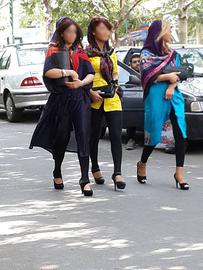
Mozoon goes on to complain about how aggressively women are pushing the boundaries of the state's dress codes. He notes that it has now become commonplace to wear dresses “which bear no resemblance at all to manteau” (requisite coats), and that it has become ordinary to reveal the bottom half a woman's body through the wearing of leggings.
Neday-e Enghelab, another conservative website, warned women who wear leggings that they might face rape and death as a result of their sartorial choices: “Don't these so-called fashionable women ever skim the newspapers and read about the bitter experiences at the hands of those unable to control their impulses? Men who kidnap a woman just because of her appearance, rape her repeatedly, and then tossed her burned body at the side of the road?”
Another website warned authorities that if they did not respond seriously to the threat, then they would have to take matters into their own hands. One bloggeer warned about social media sites that have emerged in defense of leggings, acting as enablers of the garment. “On many of these sites we're facing even more serious problems. Recently some people are trolling the streets to find the most offensive examples of leggings and taking picture with mobile phones, uploading them on these sites, and awarding points to the most provocative images.”
A number of religious and conservative sites have come to explicitly demand that authorities ban the sale of leggings in the country, filter websites and blogs that promote the fashion, censor foreign television shows and dramas in which women wear leggings, police the streets more seriously for leggings, and demand that universities and workplaces refuse admittance to women wearing them.
Amidst all the furor, online legging advertising on Iranian websites is burgeoning, with advertisers promoting new looks and colors, and warning women not to fall for poor quality Chinese leggings. At the same time, hardline sites warn women not to be tricked by the American plot and threaten that they'll soon be coming after them. Iranian women, for their part, say they want to live well, and that it's not at all clear who's being tricked by whom.
visit the accountability section
In this section of Iran Wire, you can contact the officials and launch your campaign for various problems




















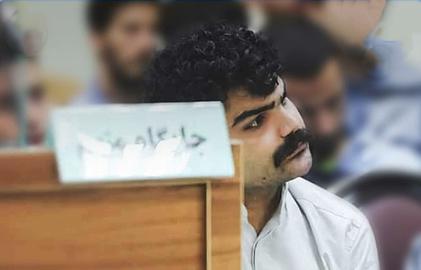

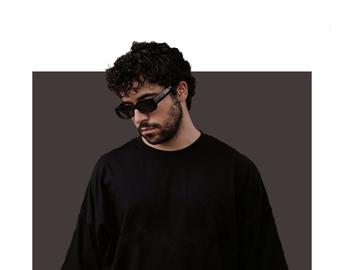


comments